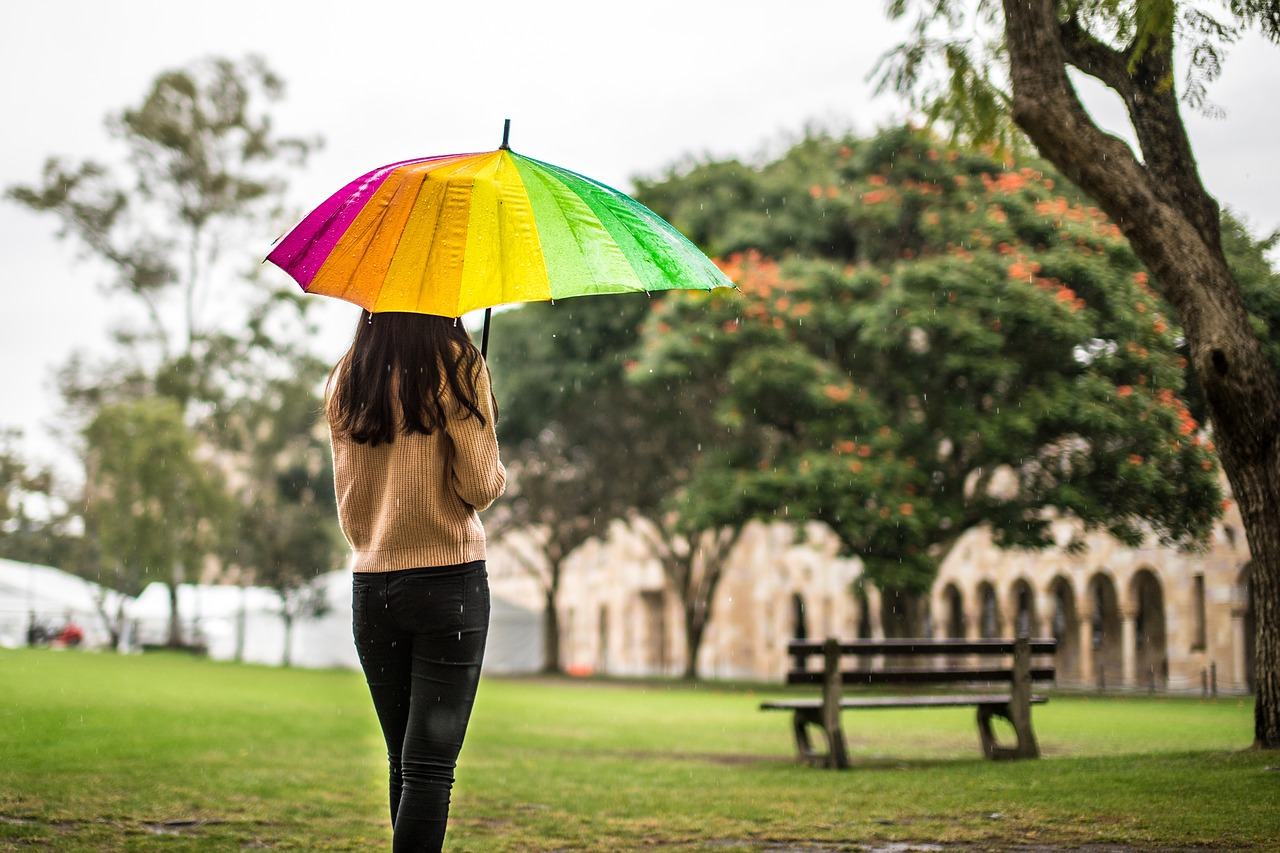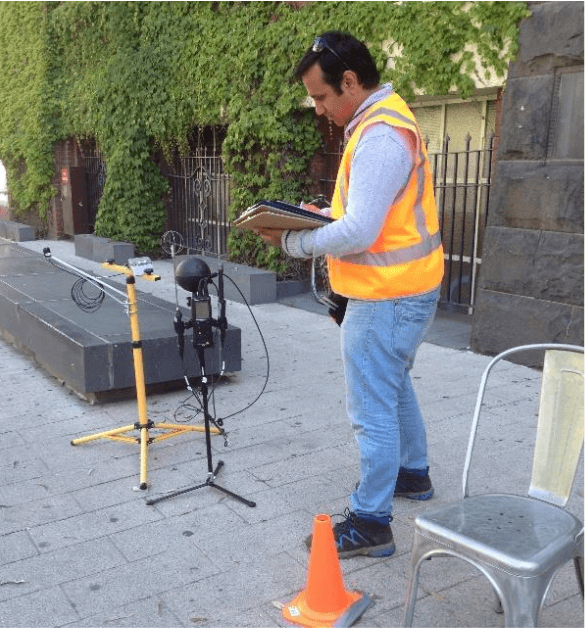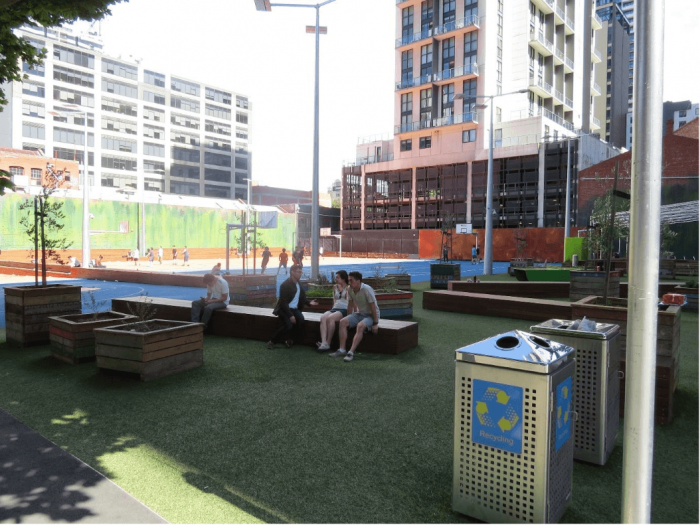
Why is weather so important in the use of outdoor spaces?
Sustainable outdoor built environments play a key role in the lives of residents in urban environments. Therefore, outdoor built environments are important from social, environmental, and economic points of view. A wide range of factors come together to form a sustainable built environment, among which a high priority is given to surrounding weather conditions.
Some believe weather determines how people use outdoor spaces, and some researchers have proved that from 27% to 69% of total attendance in urban open spaces can be predicted by weather conditions. Particularly, seasonal weather conditions can have a strong impact on levels of physical activity. On the other hand, there is evidence indicating the independence of use of outdoor built environments from weather conditions; such arguments suggest that other factors that are not necessarily related to temperature might influence the way people perceive thermal conditions outdoors. By and large, the influence of seasonal weather conditions differs in various contexts and conditions because of differences in place, people’s psychological status, local culture, society, and the economy.
How are people’s perceptions of weather conditions measured?
Assessment of people’s perception of weather conditions, called thermal comfort, provides a valuable insight into the level of performance of outdoor built environments. Thermal comfort is defined as “… that condition of mind that expresses satisfaction with the thermal environment…” (the American Society of Heating, Refrigerating and Air conditioning Engineers: ASHRAE). Technically, thermal comfort is a science that was developed more than a century ago as building designers realized that the introduction of heating systems and mechanical cooling systems to the construction market had created issues concerning overheating or overcooling in buildings. This concept considers four physical thermal factors (i.e. air temperature, radiant temperature, relative humidity, and wind speed) and two physiological factors (i.e. the level of activity and clothing insulation) to estimate their collective impact on the human thermoregulatory system (Figure 1). This approach, called heat balance modeling, investigates the degree to which humans’ internal thermoregulation is balanced.

Figure 1. Six factors measure to calculate thermal comfort. Source: author
Currently, the standard practice to measure thermal comfort is to calculate the collective impact of the six factors (Figure 2). However, there is conclusive evidence that non-thermal factors, such as psychological status and expectations, can play a key role in the formation of thermal perception. For many years now, this evidence has been used to support the second approach to study thermal comfort, which is called adaptive thermal comfort. This model has yet to be fully developed and accepted for investigation of thermal comfort in outdoor built environments.

Figure 2. Measurement of physical and psychological factors to calculate thermal comfort. Source: author
Outdoor activities and thermal comfort in different seasons: A case study in Melbourne CBD
Outdoor thermal comfort research was conducted from spring 2014 to autumn 2015 to understand the main factors (i.e. thermal and non-thermal factors) that influence outdoor activities. The studied open spaces are located in an educational precinct (RMIT University City Campus) that is located in Melbourne CBD (Figure 3).

Figure3. Three open spaces in Melbourne CBD under study. Source: author.
The results of this study showed that weather in different seasons caused changes in the pattern of people’s interaction with outdoor built environments. The change was mostly reflected in the pattern of visitors’ “frequency of visit,” “length of stay outdoors,” “type of visitors and activities,” and “thermal adaptive measures.” For instance, when the season changed from spring to warm summer and subsequently cooler autumn, the ratio of transient visitors increased.
The results also suggested that, with a change in seasons and drop in temperature, the number of people who often used the outdoor spaces noticeably reduced. The influence of weather was mainly evident in autumn. The results also suggested that peoples’ presence outdoors had a correlation with several weather parameters during autumn. The influence of seasonal changes may be rooted in peoples’ thermal expectations and, thus, thermal perceptions that dictate peoples’ behaviors outdoors.
Influential thermal and non-thermal factors in the usage of open spaces
Further analyses in this study showed that the extent of the influence of season on peoples’ usage behavior might not necessarily be the same in every open space. The results could provide evidence that a combination of three factors, including time of day, spatial function, and weather, can determine peoples’ presence in outdoor built environments. The function of the place as a contributor to the character of a place can influence the role of meteorological conditions by modifying thermal expectations.
In this study, while the association between attendance and weather was found to be relatively similar in Sites 1 and 3, it was lower in Site 2 where respondents who visited this site for a short time indicated its main function was a “passage to another place.” The largest percentage of transient visitors was found in Site 2. Therefore, it can be conferred that when the main function of place and activity was a “passage to another place,” the weather was not a potential deterrent of people’s short-period presence outdoors. On the contrary, in Sites 3 and 1, where the function of the place was supporting entertainment activities (i.e. BBQs, basketball, and a range of other possible activities), weather conditions had a larger association with peoples’ presence outdoors (Figure 4). Hence, most visitors attending these two sites were non-transient. Particularly in Site 3, the peak of visits by non-transient visitors was not only limited to lunchtime, but also extended to 4:00 pm onward.

Figure 4. An example of the usage pattern in Site 3. Source: author
The time of day also proved to be strongly associated with the number of visitors attending the study sites. This factor was the main contributor to peoples’ attendance outdoors in this study. The mere fact that the RUCC sites were mostly attended by students and staff that needed to be indoors at certain hours (e.g. attending lectures, meetings, and workshops) explains the link between the time of day and the number of daily visits. In other words, even though weather conditions were appropriate, the usage was still very much dependent on how busy students and staff were during the day. With the same line of reasoning, maximum visits took place during lunchtime, irrespective of site and the season, when typically lectures were not scheduled to allow students and staff to have lunch.
These findings are described in the article entitled Effect of seasonal changes on usage patterns and behaviours in educational precinct in Melbourne, recently published in the journal Urban Climate.









